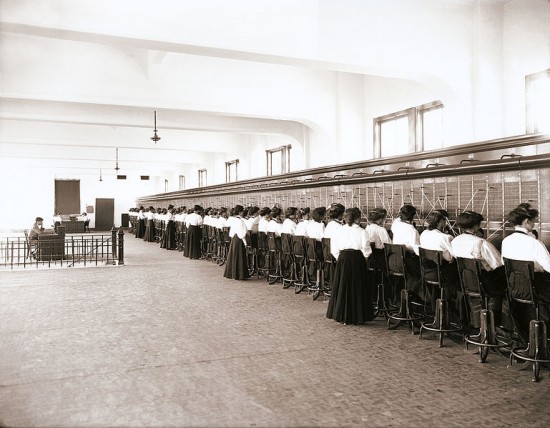































I was thinking about security over the last month or two; it comes to mind pretty often when working in technology and when listening to news coverage of technology. But that's not my topic today. I got a bit distracted.
You see, when I was very young, my mother would lose her glasses regularly. While her vision wasn't quite as bad as mine is now, she was still very challenged without the glasses. And she'd always say the same thing when she misplaced them: "Robert, help me find my glasses and I'll help you look for them."
I thought back to this for various reasons recently, thanks to a burst of coverage in the last few weeks around the Plain Old Telephone System, or POTS. Every few days I've read or heard new stories of the death of the landline. AT&T wants to be released from the requirement to maintain the physical plant that for the past century has guaranteed pretty much everyone in the United States a 48 volt line into their home to let them call any other landline in the world. This isn't new news, though... I'm seeing the headline going back almost five years.

Now if you ask around in urban and suburban areas, you'll find fewer people depending on that landline for their routine phone calls, thanks to cell phones, voice-over-IP (VOIP) services, text messaging, video chat through mobile platforms, or just email replacing the old "reach out and touch someone" method of connecting with a distant human being. You probably don't need a FAX at home, and unless you've dealt with a financial institution lately, you probably haven't needed to send a FAX from anywhere in quite a while.
Indeed, the stories I heard touted VOIP as a major reason for not needing landlines anymore. People are using Internet telephony for their home-based phone needs more and more. I can commiserate, as there's an orange striped ATA on my desk at home, along with a SIP bridge. But here's where my mother comes in.
A major advantage of POTS is that it meets the basic needs of the lowest common denominator, providing a phone in your home for as little as$10 a month. Homes are almost certain to already have a POTS line, providing regular calling as well as a gateway to dialup or DSL Internet connectivity.
A second advantage is that that phone line from your local descendant of Ma Bell has a lot of regulatory overhead with it (one of the reasons AT&T wants to get rid of it). Your phone company is required to keep it working, and to fix it promptly if it breaks. If your high speed Internet connection goes down, what's the chance of your provider jumping to fix it? Or even acknowledging the problem promptly, in many cases?
A third advantage is that your POTS landline is designed to work whether your home has power or not. This is lowest common denominator as well; if you buy a$10 wired phone that doesn't require plugging in, it will work on POTS whether you have electricity or not. Your cablemodem or DSL bridge probably isn't line-powered, and when your power goes out, so does your Internet connection. But you can still call the power company or emergency responders from that$10 wired phone and that$10/mo phone line.
But the main benefit of the POTS network that may be overlooked by pundits and FAX-haters alike is that many of us still get our Internet connectivity over those same wires. In much of the United States, DSL is the most affordable option once you outgrow dialup 56k connections, coming in as low as$20/month in some areas, and you're dependent on the landline infrastructure to get that multi-megabit goodness into your home.
If we let those wires fall into disrepair (further than they may be already), we won't have anything to bring that Internet connection in on. And without an Internet connection, our Internet telephone service won't work. Or as my mother might have put it, "help me replace my Internet so I can call you over it."
Many of us have alternatives to DSL, like cable Internet, satellite services, or mobile data on our smartphones. But that lowest common denominator, the audience that really needs to be covered to bridge the digital divide, may not have$50 or more a month for phone and (limited) Internet if they are in a good cellular area. They may not have the stomach to challenge the cable providers annually to keep their high speed internet prices low (I am not sure I do anymore). And if we let their POTS lines die before there is a viable, sustainable, and affordable alternative, we dig the gap between us even deeper.
What do you think is the most practical long term solution to keeping everyone connected despite an increasingly aging physical infrastructure?
Join me at Cisco Live US in San Francisco this May. Read my CLUS back story!
 Tags quentes :
#CiscoChampion
VoIP_phone_systems
Tags quentes :
#CiscoChampion
VoIP_phone_systems